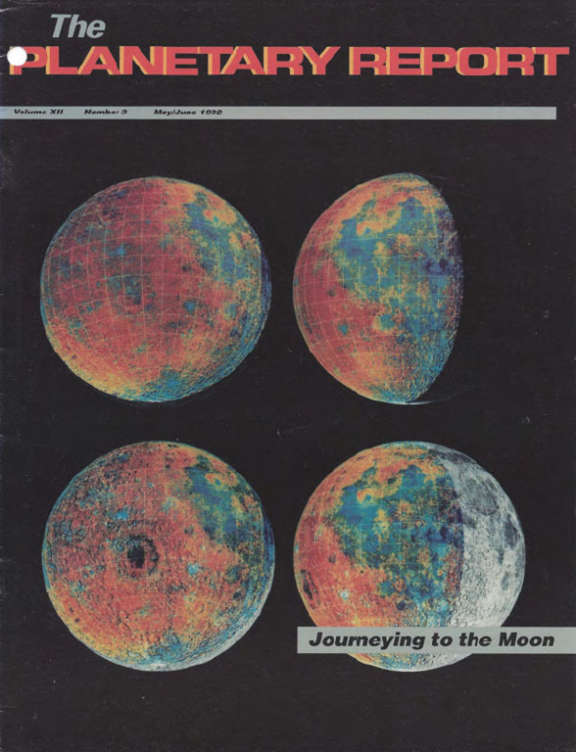The Planetary Report • May/June 1992
Journeying to the Moon
On the Cover: Remote sensing is possibly the most powerful scientific tool to mature during the Space Age. These false-color images of the Moon were compiled from data returned by <i>Galileo</i> during its 1990 Earth-Moon encounter and later superimposed over an airbrushed map. The ways surface materials, such as soils, reflect light can tell us about their composition. Here the different colors indicate different reflectivities and composition. For example, green and yellow indicate iron- and magnesium-rich minerals.
Features
4 Titan's Greenhouse and Antigreenhouse Effects: Christopher McKay, James Pollack, and Régis Courtin delve into this mysterious moon's atmosphere.
8 Through the Fuzzy Boundary: A New Route to the Moon: Edward Belbruno looks at different trajectories to get to our nearest neighbor.
11 Keeping an Eye on Earth: Remote Sensing in Russia: Arnold Selivanov showcases Russia's efforts to study our own planet.
Departments
3 Members' Dialogue Responses to News & Reviews.
16 Society Notes Addressing the UN, upcoming meetings, and contest winners.
17 World Watch Talking to Congress; Mars '94/'96.
20 Q&A Could asteroids or comets be used as spacecraft?
The Planetary Report • May/June 1992
Help advance space science and exploration! Become a member of The Planetary Society and you'll receive the full PDF and print versions of The Planetary Report.


 Explore Worlds
Explore Worlds Find Life
Find Life Defend Earth
Defend Earth


